By Branko Bogdanovic
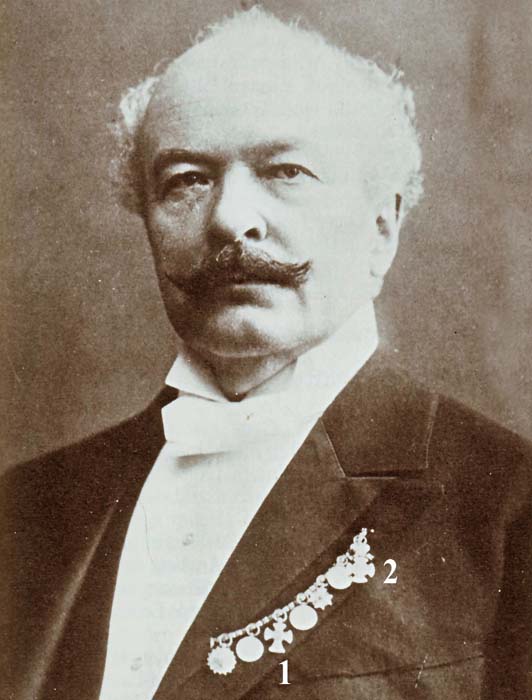
In view of history of semiautomatic pistols, Georg Luger was by all means one of the most famous. However, most of the works dealing with his construction and his designs were chiefly based on patent licenses and foreign records. The Prussian military archive in Potsdamer, Brauhausberg, which had possessed most part of the relevant documents concerning both the development of the weapon and its designer were destroyed during Allied air raids in 1945. It wasn’t until the 1970s that neither foreign nor local researchers had any idea that the Archive of the Historical Institute of Montenegro possessed twenty letters sent by Luger to Major Iliya Haydukovich during the period from 1906 to 1914. As far as we know, this is the largest collection of Luger’s letters. Up to now, only three other Luger letters had been published (sent to Swiss Captain Paul Probst in the period from July to August of 1904), and a facsimile of a post card sent by Luger to his son Bartholomew. Unlike the mentioned records, the documents in the Montenegrin archive contains valuable information about both the author, sales of Maxims and the weapon he was working on.
The hundredth anniversary of the Luger system P-08 Parabellum pistol, as one of the most famous pistol designs, was commemorated in Germany and most of the European countries as well as in the USA. In the course of the 19th and 20th centuries, Georg Luger was regarded as a national symbol of German prestigious technological superiority. However, the fact that Luger only perfected Hugo Borchardt’s design of the Parabellum pistol has been totally disregarded.
The Letters
Georg Luger’s twenty letters and one telegram that he sent from 1906 to 1914 to Iliya Haydukovich, the chief of the military workshops of the Ministry of the Army of Montenegro are kept in the Archive of the Historical Institute of Montenegro in Podgorica (AIICG). This discovery is even more interesting because all of his letters are written in Serbian language. The same archive preserves his correspondence with the Minister of the Army of Montenegro, General Mitar Martinovich (1870-1954). Since Martinovich similarly to Luger received his education in Italy, these letters are written in Italian which, according to his own words, Luger spoke better than Serbian.
Most of Luger’s surviving letters are handwritten. He didn’t start to type his letters in Latin alphabet until April 30, 1911, and on January 28, 1913 he obtained a typing machine with Cyrillic alphabet and was using it until he stopped his correspondence in 1914.
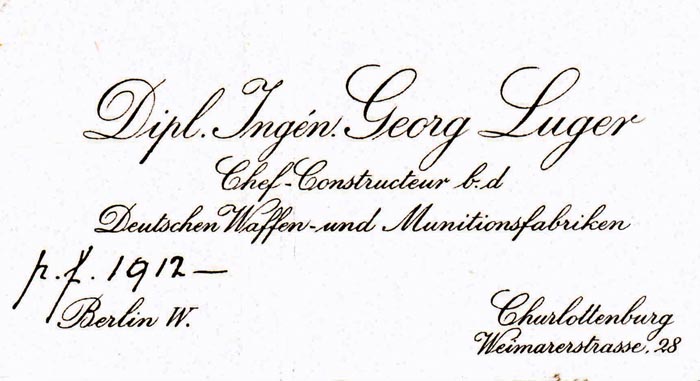
The Maxim Machine Gun
Around the end of 1905, the Ministry of the Army of the Principality of Montenegro decided on purchasing twenty four machine guns abroad. With approval by Russian tsar Nikolay II Alexandrovich Romanov (1868-1918), the Montenegrin prince Nicolas I Petrovich-Nyegosh (1840-1921) entrusted the head of artillery, a brigadier Mitar Martinovich, Prince Danilo Petrovich (1871-1939) heir to the throne, and the Russian military attaché, lieutenant-colonel Nikolay Mihailovich Potapov (1871-1946), with choosing the machine gun model. On December 20, 1905 the Montenegrin delegation visited the Hotchkiss factory in France and became familiar with the M1900 Hotchkiss machine gun. The next day at the factory’s shooting range, the field trial was performed. The negotiations were over on December 26, 1905 and after three days the Delegation left for London. On December 30, 1905, Potapov and Martinovich visited the head office of the Vickers, Sons & Maxim Ltd. company wherein they negotiated the terms with Albert Vickers (1838-1919) and sir Arthur Trevor Dawson (1866-1931) on purchasing twenty four machine guns of the New Pattern Maxim M1901. Prince Danilo independently visited the British Arms Company Rexer, which manufactured Madsen machine guns. Together with factory’s experts, Prince Danilo tested the Rexer-Madsen machine gun at the Wraysbury’s shooting range, 35km west of London on January 3, 1906. On January 4, the complete Montenegrin delegation witnessed the field trial of the Maxim machine gun at the Erith Works shooting range. The Montenegrins concluded that the Maxim was best of all tested machine guns and decided to recommend it to the Ministry of the Army of Montenegro. The problem was that the British firm required 8,000 crowns per a weapon and the total sum for twenty four machine guns exceeded their budget resources. The Delegation decided to leave for Germany to wait for the Ministry of the Army’s final decision.
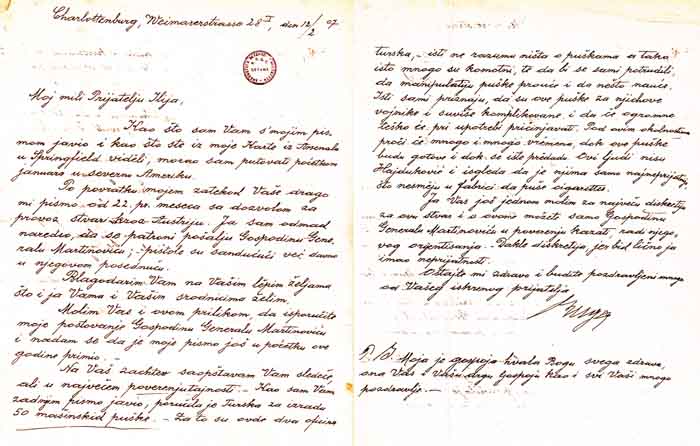
They reached Berlin on January 15, 1906 and found there the decision from Cetinye on purchasing only twelve machine guns. Consequently, Potapov, Prince Danilo and Mitar Martinovich addressed to the management of DWM on January 17th, with a request for obtaining a draft of the agreement for purchasing the machine guns. Although, the seven-year agreement between DWM and Vickers, Sons & Maxim about mutual cooperation on production and sales of the Maxim machine guns had expired as early as 1898, the German plant was still producing the machine guns for commercial markets after the British original designs. Some parts were even produced in Erith Works and Crayford Works in Kent. This enabled DWM to deliver to the Montenegrins the same weapon that had been already tested in Britain. The Montenegrin delegation visited the DWM factory in Martinikenfelde on January 18th and on the 19th they were present at the field trial of the German made machine gun. On the 20th of January, Mitar Martinovich and the factory managers Paul Theodor Eduard von Gontard (1868-1941) and Max Kosegarten signed the agreement on purchasing twelve machine guns of the Maxim system in Russian calibre .3 inch (7.62mm). During a week-long stay in Berlin, Mitar Martinovich became acquainted with the factory’s associate and expert Georg Luger and the two of them became friends. As German was not spoken by the Montenegrins, Luger translated the talks into Italian to Mitar Martinovich.
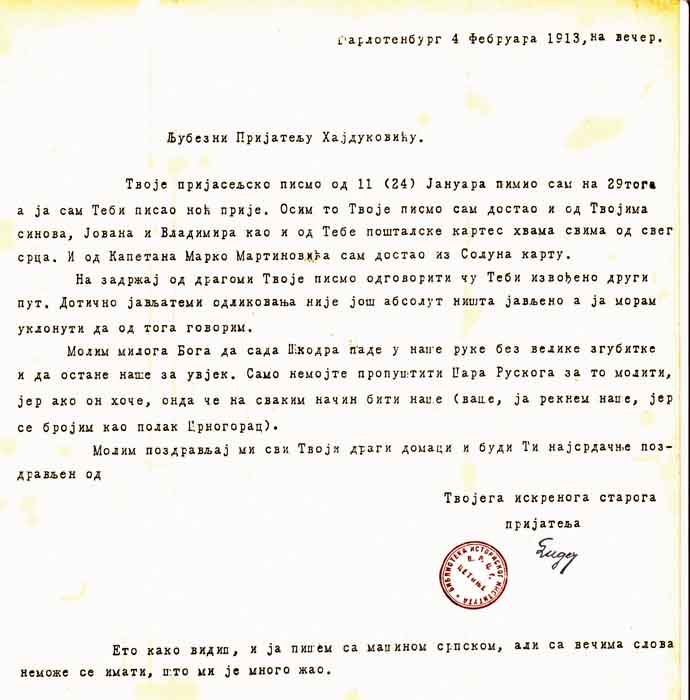
Head of the Military workshops, artillery Major Iliya Haydukovich, received the finished machine guns from the Martinikenfelde factory manager Felix Haenisch on July 3, 1906. Due to several days of his stay in Berlin, Haydukovich too became a close friend with Georg Luger.
The quality of the construction on which Serbia will decide in 1908 proved that Montenegro had purchased their Maxim machine guns too early; not waiting for the weapon to be developed completely. Some details from Luger’s correspondence with Iliya Haydukovich suggested such a conclusion. Luger warned the Montenegrins by his letter of July 10, 1907 that twelve machine guns, which were bought a year ago, were incompatible with the Montenegrin hilly terrain because of their weight. Besides, in his letter of February 13, 1913 discussing possible purchase of the armour shields for the old machine gun type, Luger said that it was impossible to produce them without insight in the mount’s type. Sixteen days later, Luger writes that he was unsuccessfully searching in London for the original mount for the Montenegrin Maxim M1906, or at least for its drawings. However, that machine gun type production was discontinued long ago and the documentation was destroyed. It meant that the M1906 was manufactured on the basis of the old British licensed documentation.
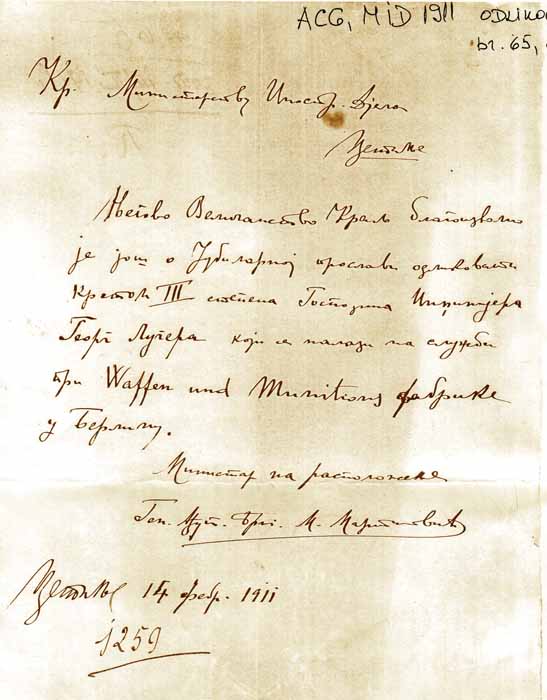
According to Luger’s and Haydukovich’s correspondence, it appears that Luger advised Montenegro to obtain the new up to date machine guns. Undoubtedly, the most interesting information are those “secretly” sent by Luger to Haydukovich on July 10, 1907. He literally writes: “The German army requested long ago from DWM to construct a machine gun of less mass because the existing weapon was not suitable for transporting on impassable mountainous terrains.” The factory team, supported by Luger, managed to decrease the machine gun mass from 27.5 kg to 15.5 kg. Additionally, the wheeled version of the sled mount mass decreased from 64 to 30 kg. Thus, the weapon became suitable for the hilly terrains. Luger also suggested to the Montenegrins to wait until the new machine gun system was thoroughly examined and adopted by the German Army when the mass production would start, and to order it for their own needs afterwards. Apparently, Luger wrote about the most recent German version of the Maxim MG-08, which was being developed at that time. However, his given information was too optimistic in comparison to the result of the actual DWM production. The final version of the MG-08 had a mass of 20.8 kg (without water), or 25.3 kg with water in water jacket and the German sled mount, which could be carried or pulled by two men on shorter distances, had a mass of 37.5 kg. Nevertheless, it was still a step forward in comparison to the old wheeled version of the mount M901 of 67 kg weight. Unlike the wheeled mount, the new commercial tripod that was used on Serbian M1909, Bulgarian M1908 and even on the Montenegrin machine gun M1912, weighed 22.5 kg, which considerably exceeded the 15 kg that was optimistically mentioned by Luger.
Upon the Montenegrin urgent request for delivery of a new shipment of the machine guns, on March 30, 1911 Luger informed Haydukovich as follows: “That it is not possible to assemble more than 6 weapons from DWM combining Russian barrels in 3 linien (7.62mm) calibre with existing parts produced for German, Serbian and Bulgarian patterns. Assembling the weapons of different parts would last about two months and the price would be half of the sum paid in 1906.” In other words, Luger offered six Montenegrin machine guns to be assembled from the 7.62mm barrels combined with parts of German MG-08 or Serbian M1909 patterns as well as of M909 tripod by June of 1911. This time the Montenegrins were more cautious and gave up the idea of purchasing the offered mixed guns. A year later, Luger informed the Minister of the Army, Martinovich, that the German factory was ready to produce new 7.62mm Maxims for Montenegro at 20% discount in comparison with other commissioners. In early August of 1912, “Dipl.ingén. Georg Luger, Chef Constructeur b.d. Deutschen Waffen- und Munitionsfabriken” went to Cetinye from Berlin again.
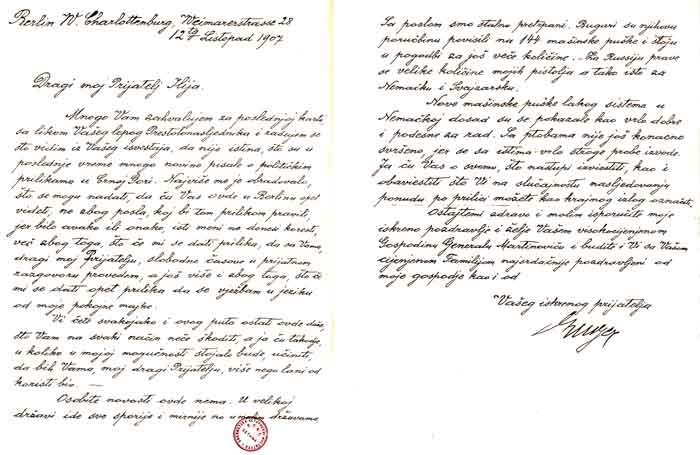
On August 6, 1912, Luger and Brigadier Martinovich signed the agreement on delivery of 50 machine guns of the new Maxim system in 7.62mm calibre (commercial pattern of 1909) at the Ministry of the Army office in Cetinye. On the same day at 5 PM, Luger had an audience with King Nicolas who thanked him very much for his unselfish support in purchasing the machine guns. The agreement anticipated that DWM would deliver to Montenegro 50 machine guns with tripods but without armour shields, 100 spare barrels in 7.62mm calibre, 500 cloth belts with 250 cartridges and 300 wooden chests (each holding one cloth belt with 250 cartridges). Total price for the machine guns and accessories was 314,165.75 crowns. DWM gave a 29% discount price to Montenegro and the final total price was 223,057.68 crowns.
If the Germans had strictly observed the terms of the agreement they would have delivered the machine guns during January of 1913. However, because of the stagnation of the operations of Skodra (The First Balkan War), the Ministry of the Army of Montenegro insisted on rapid delivery of the weapons. In order to push things along Haydukovich left for Berlin twice: staying there from September 3rd to November 14th first time, and the second time from November 22nd to December 12th 1912, when he returned to the country with the weapons. Due to Luger’s support, Haydukovich’s mission was a success. The machine guns were completed in record time and transported by train from Berlin to Bari over Switzerland and Italy via Milano. In Bari, the shipment was loaded on the Greek steamship “Antigona” which reached the seaport of Bar (Antivari) on December 12, 1912.
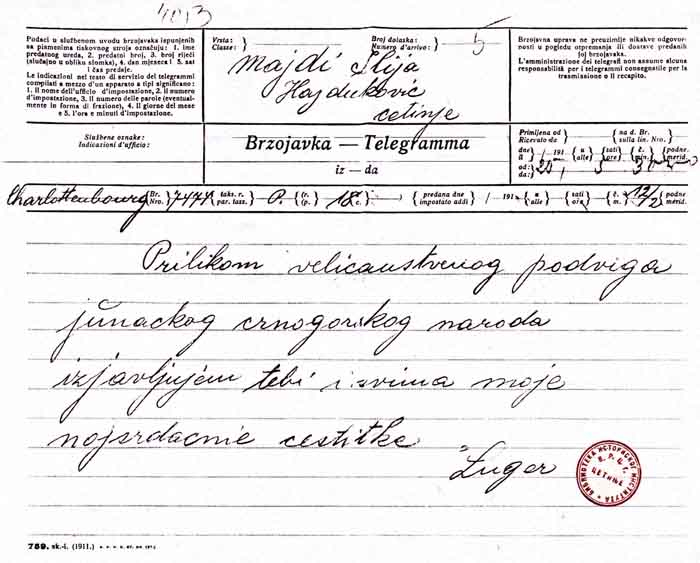
Meanwhile, battle experience proved that the purchase of the machine guns without armour shields was a big mistake. Without shields, not only was the crew exposed to the opponent fire but the water jacket was often damaged disabling the weapon for further action. The Ministry of the Army tried to order the armour shields subsequently for both the new M1912 machine guns and the old twenty weapons of the M1906 pattern. On February 13, 1913, Luger informed Haydukovich that 25 shields for the new weapons would be finished in five days (on February 15), and the remaining twenty-five pieces would not be available until the end of the current month. On the other hand, DWM was incapable of manufacturing armour shields for the old M1906 weapon because the original mount and relating technical documentation did not exist any more. DWM suggested the Montenegrins to send to Berlin one tripod of the M1906 machine gun in order to manufacture the 12 requested shields for it. It appeared soon that there was a problem with delivering of the new type shields, too. By his letter of February 29, 1913, Luger informs Haydukovich that 50 new shields will start the journey via Milan not until March 2. Unfortunately, that contingent was stopped in Bari because of the Italian sailor’s strike (Luger’s Letter of March 13, 1913). That meant that the shields would not be available during the First Balkan War.
For the services he had rendered to Montenegro, King Nicolas I awarded Georg Luger in 1906 with the Order of Danilo of IV class (Officer) and in 1910 with the same Order of III class (Commander).
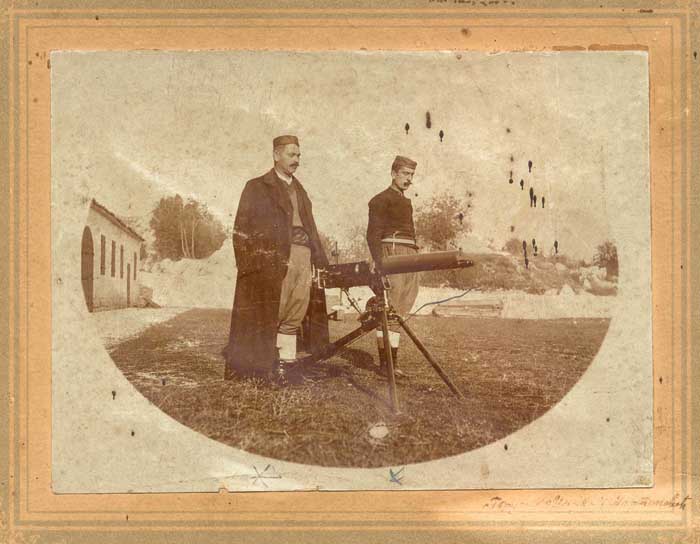
Intelligence Data
According to the correspondence, it seems obvious that Luger professionally supported and advised the Montenegrins. On July 10, 1907 he wrote to Haydukovich: “I am bound by my word to support and defend your interests and behave as being one of you.” He gave detailed data about other countries’ armaments asking for conspiracy of confidentiality in that regard. On December 30, 1906, he informed Haydukovich that, “Turkish Government had commissioned 50 machine guns.” In the letters of May 19 and July 10, 1907 he reports that the work on finishing the Turkish machine guns were being accelerated. That weapon was 7.65mm calibre and “adopted to fit the wheeled version of sled mount M1901 that could be pulled on the wheels or carried on horseback. The mount mass was 67 kg and machine gun and carriage mass was almost 100 kg (sic), which means that the weapon was too heavy for the hilly terrains.” Luger did not hesitate to mention that the “two Turkish officers responsible for receiving material were completely ignorant as to the machine guns and, in addition, they showed no interest in learning anything, but were only embarrassed because smoking in the factory was forbidden.” On the other hand, Bulgaria ordered 112 and Rumania 16 machine guns from DWM at that time. The letter of July 10, 1907 tells us that 50 Turkish machine guns were finished at last and sent by a ship from Hamburg to Constantinople. Bulgaria and Rumania decided on the wheeled version sled mount, featured like the Turkish mount. Three months later (October 12, 1907), Luger writes to Martinovich that Bulgaria expanded its order from 112 to 144 machine guns.
The next reports did not come until 1911. Thus, Luger informs the Montenegrins that Bulgaria ordered 88 more machine guns (total of 232 weapons), that Serbia will have 230 Maxims in two months (in June of 1911), and Rumania, which previously had bought 28 machine guns, ordered 250 more weapons, and announced an expanding of the agreement to 350 machine guns in total.
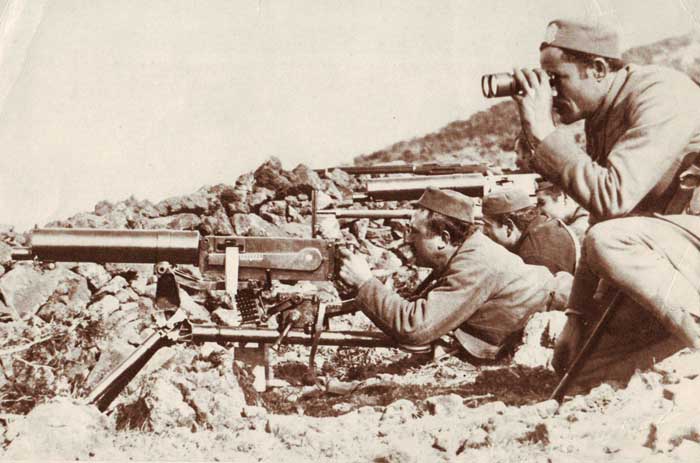
The most detailed report is that of May 22, 1912. According to Luger, Turkey purchased 330 Maxim machine guns in total as well as 80 Hotchkiss M1900 weapons and possessed 800,000 Mauser rifles in 7.65mm calibre. Serbia bought about 180,000 Mausers in 7mm calibre and 230 Maxims M1909. Bulgaria possessed 230 Maxims, of which two thirds were of the old M1904/1907 pattern and one third of the new M1908 pattern as well as 200,000 Mannlicher 8mm M1888 and M1895 infantry rifles. Rumania was in possession of 300 machine guns of the new Model 1910 pattern and 28 of the old Model 1907, 250,000 Mannlicher 6.5mm M1893 rifles and about 100,000 old single shot breechloader Henry-Martinis. Finally, Greece possessed 100,000 Mannlicher-Schönauer 6.5mm (M1903) rifles and 25 Maxim machine guns, and at that time, it was inspecting the Schwarzlose 6.5mm M1907/12 machine gun.
Luger Parabellum Pistole
In the letter of December 30, 1906, Luger informs Hajdukovich that he sent a “Parabellum” P-04 pistol as a gift to General Martinovich on December 28. It took much time to prepare the pistol for sending. Actually, the engraver made two unsuccessful attempts to engrave the monogram with the crown above it. The third attempt was not much more successful either, but as he was time limited (the pistol was to reach Cetinye as a Christmas gift by January the 7th according old calendar) the weapon bearing a failed monogram was sent in spite of it. An unanswered question is whether Luger commissioned the standard Prince Nicola’s cipher (NI surmounted with crown) commonly found on the rest of Montenegrin arms or it was General Martinovich’s monogram. Another problem was that Austro-Hungary did not allow ammunition transit for the pistol and Luger inquired about whether it was safer to send 1,000 cartridges by ship, via Hamburg. On January 8 he informed Haydukovich that he was about to travel by ship to the USA for three weeks because of pistol business at Springfield Armoury. Obviously it was a trip for the Parabellum .45 ACP trial, which lasted from January 15-26, 1907 at Springfield Armoury. In his letter of February 12, 1907 he informs Haydukovich that on his return to Berlin he was told that the Montenegrin Ministry of the Army had already received the engraved Parabellum in velvet-lined walnut case, including accessories and extra magazine, and that he had finally provided Austrian transit license and sent disputable ammunition to Montenegro.
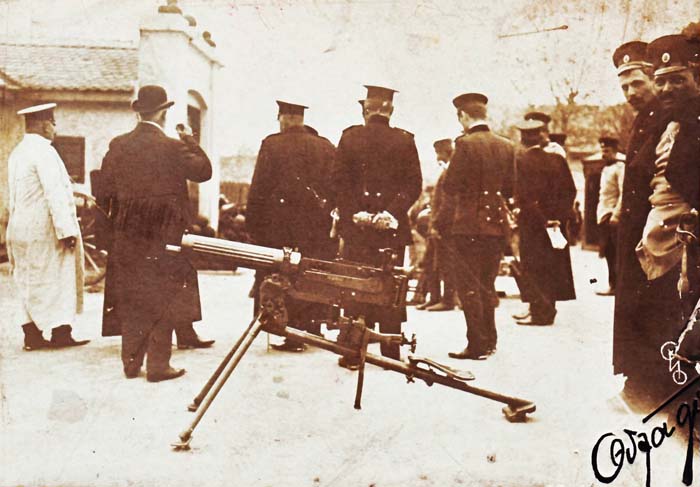
In addition to the letter of May 19, 1907 to his friend, he sent an old description “for own pistol which, as you know, we call Parabellum” which was made for Swiss pattern in 7.65mm (Pistole Ordonanz 1900). A few months later in July he sent to Cetinye the “description of pistol public trials that took place in Switzerland in 1898 and 1899, which was published in French in 1900.” In the enclosed letter, Luger did not miss to mention, “Borchardt is mentioned in this document because, this time, he took part in financial matters only!” Obviously, Luger intended to deny any importance of Hugo Borchardt (1844-1924) in pistol development and ascribe the fame to himself while praising the commercial success of the weapon. Accordingly, he wrote on July 10, 1907 that, “his pistols were in hot demand and were being made for Russian officers. Due to these circumstances, I had the opportunity to meet and talk with Russian military attaché von Taticheff and colonel von Michelson.” In fact, Luger met relatively unimportant officials of the Russian embassy Aleksei Borisovich Tastishchev (1904-1990) and military attaché, colonel Alexander Alexandrovitch Mihelson. Three months later, on October 12, he stated that “a large quantity of Parabellum was being manufactured for Russia, Germany and Switzerland,” and on August 9, 1913 he writes as “he is busy with pistols because a quantity of 125,000 weapons have been ordered for the German army and 18,000 for Holland and the USA.” Obviously Luger exaggerated because of commercial reasons. Actually, the USA had never decided on the Parabellum pistols and according to the surviving documents, not more than 5,000 pistols in standard 9mm calibre had been marketed in the USA.
However, in the mentioned letter of May 19, 1907, Luger writes that the description of a new German pistol design in 9x19mm calibre (Selbstladepistole 1904, the precursor of P-08) was still being worked and he wouldn’t send it until it was officially published. Actually, the German army forbade the weapon delivering before that. Haydukovich needed the description because Luger had presented him the P-04 9mm pistol on the occasion of their meeting of July 1906 in Berlin. In fact, Luger wrote about the Rule “Leitfaden betreffend die 9mm Selbstladepistole (Luger), Berlin, Kriegsministerium,” which was not published until the second half of 1907.
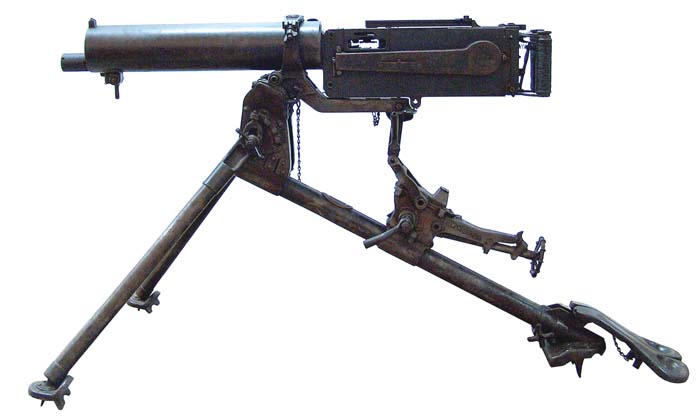
In the letter of March 30, 1911 Luger informs Haydukovich that he gives him the standard German Kriegsmarine pistol P-08 as a gift. He sends his dismantled weapon and because of the Austrian embargo on selling the arms to Montenegro, he wrote in the mailing declaration, which he addressed to “Mr. Iliya Haydukovich” that he was sending Physicallische Instrumente. Namely, he did not mention either the rank or closer data about the recipient in order to keep the Austrians from finding out that the recipient was a military officer.
We believe that the Parabellums presented to the Montenegrin officials were indeed an expression of friendship because Luger was aware that Montenegro was short of money to order this weapon for its army. The Serbian market was more interesting in this regard. In his letter of July 10, 1907 Luger wrote to Haydukovich: “Next week I leave for Serbia to negotiate there about my pistols. Regrettably, I do not have the recommendations for HM King Petar I Karagorgevich (1844-1921) and the ministers. With God’s help I might be lucky over there.” Presumably, Luger sent to Haydukovich the quoted letter of July 10, 1907 hoping to obtain a private support from the court. Actually, Serbian King Petar I Karagorgevich married the eldest daughter of the Montenegrin prince Nicolas I, the Princess Zorka (1864-1890) in 1883, which means that the Serbian king was son in law of the Montenegrin ruler. However, Luger was not quite familiar with inter-dynastic frictions and disagreements between the two rulers and the Montenegrin officials were unable to recommend him to Serbia.
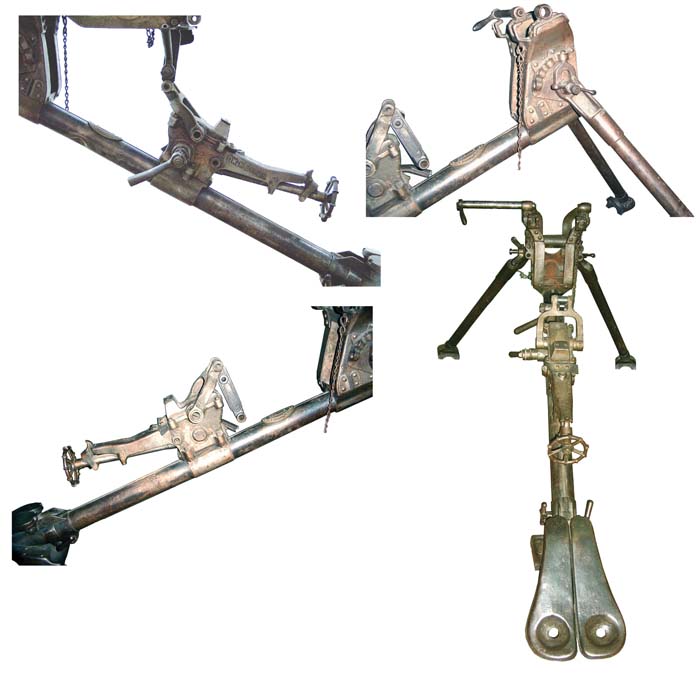
Secondly, we must say that Luger was insincere in this regard. As the matter of fact, the Ministry of the Army of the Kingdom of Serbia decided on purchasing 100 modern machine guns during 1907. DWM submitted its commercial 7x57mm Maxim in response to the open competition. On behalf of the factory, Luger escorted the weapons to Belgrade and took part in all trials at Kragujevac, Chachak, and Valyevo. Hence, Luger was able to give necessary instructions on the spot and settle minor stoppages. At the meeting of March 6, 1908 the Commission, decided on the Maxim system machine gun for the Serbian Army with minor alterations. Therefore, several days later the additional trials of the Maxim machine gun were performed on permanent automatic fire of 15,000 rounds. The tests were over on March 10 and the Commission sent an official report to General Stepa Stepanovich, Minister of the Army. On May 20, Stepanovich ordered all the observations to be delivered to Berlin in order to make DWM able to react and improve the weapon as soon as possible. The improved weapon was returned to Belgrade in the autumn and on October 3, the Ministry of the Army ordered the Commission to check up whether noted deficiencies were removed. As the machine guns satisfied all the requirements, the Serbian Commission made the decision on March 6, 1908 to adopt the commercial Maxim M1909 7x57mm machine gun. The Serbian Minister of the Army, by his Act of November 2, 1908, approved the introduction of the M1909 Maxim system machine gun in 7x57mm calibre into service (standard Serbian infantry calibre of the 1899 Mauser system). Soon after, through Damyan Brankovich, the agreement was signed with DWM according to which the individual price of the machinegun was 10,000 dinars. The weapons were delivered to Serbia during 1909. Under the influences of Damyan Brankovich and Georg Luger, Serbia commissioned from DWM 130 more machine guns of the same pattern and calibre. The machine guns were delivered along with the M1909 commercial tripods weighting 22.5 kg and armour shields (Schild 08) in size of 620×740 mm and the weight of 13.8 kg. According to Luger’s information sent to Haydukovich on March 30, 1911, the shipment of 230 commissioned machine guns were to reach Belgrade by May of the same year. After the success in the First Balkan War, Damyan Brankovich informed Georg Luger on February 18, 1913 (after the Armistice lasting from December 4, 1912 to January 29, 1913) that “the Serbian machine guns were acting …perfectly and did credit to the Serbian Army.”
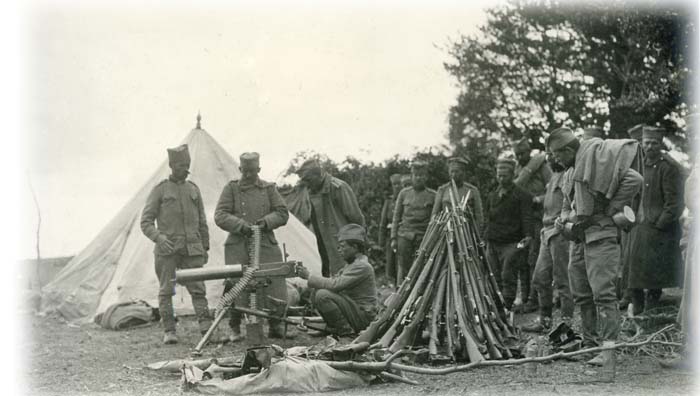
Consequently, Luger was not on a business trip to Serbia in 1907 for the sake of pistols but because of the machine guns. Next, Luger already had firm relations in Serbia due to Damyan Brankovich. Damyan J. Brankovich was the owner of Belgrade’s transport and trade association and a man with good connections in Germany. He was an agent of the Norddeutsche Lloyd Bremen-Bremerhaven as well as an agent of the Krupp concern, DWM and Mauser. Brankovich considerably influenced on Serbia to make the decision on the German Maxim machine gun, but he too made efforts to promote Luger’s Parabellum. Thus, he reported to Luger on February 18, 1913: “As to the pistols, I managed to keep the issue unclosed and hopefully it will be solved in our favour.” Unfortunately, WWI stopped further negotiations.
It seems strange that DWM did not submit the Parabellum to the Serbian first open competition for choosing a new service revolver in 1903. The Austro-Hungarian military attaché in Belgrade, Major Joseph Pomiankowski (1866-1929) writes to his chief of the general staff, Friedrich Graf von beck- Rzikowsky (1830 -1920): “Auch an die vielen….The matter of fact is that the Serbian Army did not adopt any of the offered pistols but retained the six-shot revolver 7.5mm of the Nagant system M1891.” Under such circumstances, it seems likely that Luger saw his chance to offer his weapon independently.
In spite of Luger’s death on December 22, 1923, Brankovich continued offering his pistol to the new state: the Kingdom of Yugoslavia. The last attempt that followed was on May 4, 1933 at the time when Yugoslavia was testing Scfnellfeuerpistole Mauser-Nickl. Actually, August Weiss (1886-1980) moved to Oberndorf on May 1, 1930 with the aim to install the production line for the Luger pistols there. In that time DWM and Mauser AG united into the Berlin-Karlsruher Industrie-Werken AG, and the Oberndorf plant took over the production of all pistol patterns. All the machines, half products, old parts and prototypes of the Parabellum in 7.65 and 9mm calibres were brought there. The factory manager Zillinger sent through Brankovich to the Yugoslav Ministry of Army and Navy an offer for a shipment of 15,000 Parabellum pistols in calibres 7.65 and 9mm with a notification that the first batch would be assembled of existing parts transferred from Berlin. As late as on May 4, 1933, Brankovich answered with regret that the Yugoslavs were not ready to order anything but completed, newly manufactured weapons so that the negotiations about Parabellum purchasing finally discontinued.
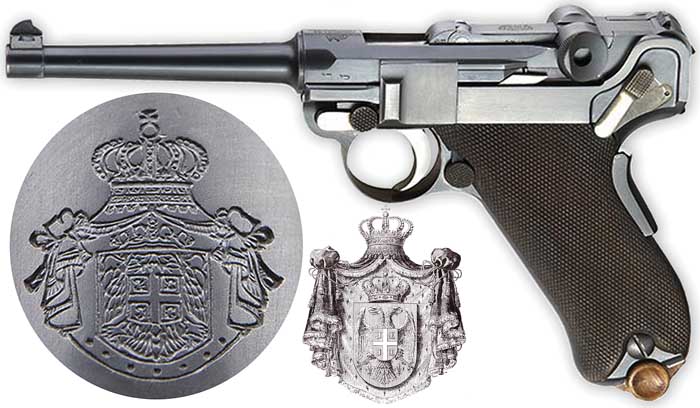
Regrettably, no single piece of Parabellum presented by Luger to the Montenegrins has been preserved. King Nicolas I offered to the Austro-Hungarians an armistice on January 13, 1916 but Vienna accepted nothing but unconditional capitulation. On January 19 at 3 PM, the King left for Shkodra from Podgorica and proceeded to Italy and France never to return to Montenegro. Brigadier Mitar Martinovich, together with a group of the officers, withdrew with the Serbian Army and became a General of the Yugoslav army afterwards. However, during the chaotic operations of 1916, he failed to take his “Parabellum” with monogram along. The ministers who stayed in Podgorica together with the King’s son Mirko, considering that according to the article 16 of the State Constitution, they had rights of acting as the Government made decision to dismiss the Montenegrin army. The Order on disbanding (No.128) was issued to the Army on January 21, 1916. By decree signed on January 25, 1916 the Montenegrins were ordered to lay down their arms. According to the terms, the Montenegrin officers were permitted to retain personal arms (the swords and the Gasser M1870/74 11.3mm revolvers). However, in June of 1916, the officers were disarmed and sent to internment. The Austrians collected luxurious weapons as war loot and took them to Austria and further destiny of these pieces has been quite unknown.
The same case was with the machine guns. No single piece of M1906 and M1912 machine guns has been preserved. Only one Serbian Maxim M1909 survives in Belgrade and it is in possession of the Military Museum. The people presented this weapon to the Army and it bears Cyrillic dedication on the upper side of the receiver: “The people of the Nish District to their heroic Second Infantry Regiment of Prince Michael.”
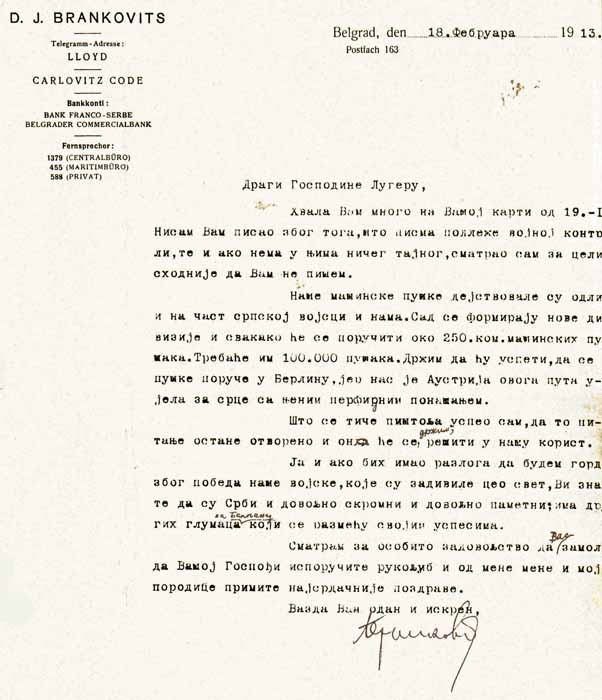
It is even more interesting that on August 23, 2006 at an auction a rare 7.65mm Luger Model 1900 (old model) pistol, serial No.415 was offered. Standard specification with the chamber having the Serbian Royal Crest and the toggle with the DWM motif with early dished toggle grips, grip safety and chequered walnut grips. A year later, on October, 15, 2007, the same weapon was offered again at another acution house.
The weapon bears the manufacturer’s initials DWM and proof marks showing crowns over the letters B, U, and G. What makes the pistol an interesting piece is the Serbian Royal Crest. However, the crest is erroneous in many ways: The flints on the shield are not recognisable, the crown surmounting the shield is of an irregular shape and the eagle’s heads are not recognisable either. Luger possessed the original stamp of the Serbian Royal Crest, which was stamped on the M1899 Mauser rifle so that he was able to use it. It is hard to believe that the engraver himself made a number of mistakes in this point.
Besides, the Crest engraving differs significantly from the pattern in which the factory initials DWM were engraved. If it is really a genuine piece, the question that arises is why Luger who carefully recorded all the pieces he had given the Montenegrins as presents, has never mentioned the Parabellum intended for the Serbian officials.
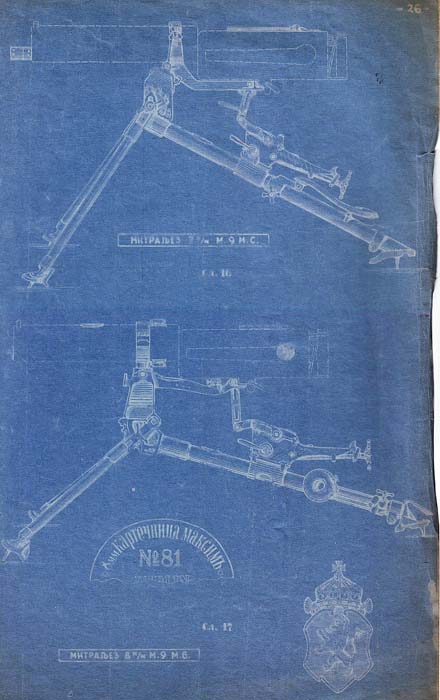
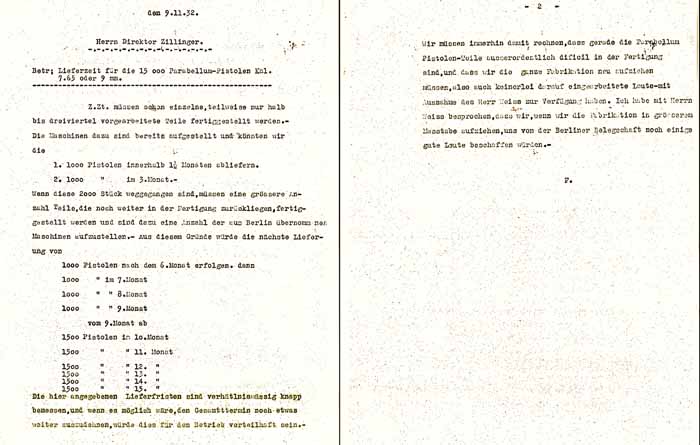
| This article first appeared in Small Arms Review V13N11 (August 2010) |












